but first, whats the difference between toilet plungers and toilet augers?
When it comes to dealing with toilet clogs, many homeowners reach for the familiar tool: the toilet plunger. However, what if we told you that using a plunger might be doing more harm than good? In this blog post, we’ll delve into the crucial differences between toilet plungers and toilet augers. We’ll shed light on why plumbers prefer the latter.
Toilet plungers may seem effective for clogs. However, they can harm your plumbing. As you vigorously plunge the toilet, you unknowingly build up pressure that may compromise the wax seal at the base of your toilet. The wax seal is a crucial component that ensures a watertight connection between the toilet and the floor flange. Continuous plunging, especially with suction-based plungers, can eventually lead to the failure of this seal. This results in leaks at the base of your toilet.
The wax seal damage may not be immediate. But over time, the repeated pressure applied during plunging weakens the seal, making it susceptible to failure. This can result in water leakage. It could cause extensive damage to your bathroom floor and surrounding areas. The issue becomes more pronounced when using plungers that force air into the toilet. For example, the Johnny Jolter Pro Power Plunger can make the problem worse.
The solution is toilet augers. To avoid the risks associated with toilet plungers, plumbers recommend using a toilet auger. While toilet augers may be slightly more expensive, the investment is worth it in the long run. Toilet augers use a snake-like steel cable. It navigates through the P-trap of the toilet to clear obstructions. This method doesn’t harm the wax seal. Plungers don’t work this way.
Toilet augers work by inserting a steel cable into the toilet. Then, you rotate it to effectively break up and remove clogs. This method eliminates the need for excessive pressure and minimizes the risk of damaging the wax seal. Professional plumbers rely on toilet augers for their efficiency. They trust the augers to address clogs without compromising the toilet’s base.
toilet plungers dont work - use a toilet auger instead!
Since we dont believe in or use toilet plungers, we will only be reviewing toilet augers. And there is only one toilet auger that we recommend. We exclusively use it at our test houses in Pueblo, CO. Many people don’t know the difference between an auger and a plunger. We described the difference above. If you have a toilet plunger, we strongly recommend you throw it away and invest in a toilet auger. Not only do they work most of the time (unlike plungers), but it is a tool that you can have for a very long time. Keep reading to see our top toilet augers, that have actually been used and test by real plumbers!
the best toilet plunger to buy - ridgid 6-kp hybrid toilet snake auger with 6' extension
Dealing with a persistent toilet clog can be frustrating. Having the right tool for the job is essential. In this blog article, we’ll explore why the Rigid 6KP Hybrid Toilet Snake Auger is the top recommendation for tackling toilet clogs effectively. You can buy this toilet auger at Home Depot. It’s equipped with a 6-foot extension.
The Only Toilet Auger You Need: When it comes to toilet augers, not all are created equal. The Rigid 6KP Hybrid Toilet Snake Auger is the go-to choice for reliable performance. Other augers on the market may fall short, wasting time and money due to ineffectiveness or potential breakage.
Key Features of the Rigid 6KP Hybrid Toilet Snake Auger:
One standout feature of this auger is its impressive six-foot extension. Most toilet stoppages occur not within the toilet itself, but at the closet flange – where the toilet drain connects to the toilet. The extra length ensures the auger can reach deep into the toilet drain. It surpasses the limits of shorter augers with only three feet of cable.
Solid and Sturdy Construction: Unlike many cheap toilet augers that risk breakage, the Rigid 6KP is robustly constructed. The handle is designed for durability. It reduces the likelihood of breakage, even during rigorous use. Additionally, the rubber piece on the auger’s end is thick. It minimizes the risk of scratching the toilet, a common issue with inferior designs.
Optimal Bulb Size: The bulb at the end of the auger, responsible for breaking up clogs, is just the right size. It strikes a balance between effectiveness and maneuverability. This ensures it can navigate the toilet P-trap without being too small to make an impact. It also ensures it is not too large to cause obstruction.
The extension handle provides versatility. It helps address different clog scenarios. By extending the handle and utilizing the full six feet, you can effectively reach and clear blockages deep within the toilet drain. Alternatively, for less challenging clogs, adjust the handle to the standard three-foot length.
Cautions Regarding Drill Use: The Rigid 6KP Hybrid Toilet Snake Auger is a powerful tool. However, caution is advised when considering the optional drill attachment. Using a drill can lead to unintended consequences, such as splashing, potential cable kinking, and even the risk of breaking the toilet. It’s recommended to use the auger as designed. Avoid unnecessary risks that could result in costly damages.
Conclusion: The Rigid 6KP Hybrid Toilet Snake Auger is the undisputed champion for those facing stubborn toilet clogs. This toilet auger has an extended reach, solid construction, and optimal design. It proves to be a worthwhile investment for homeowners dealing with toilet plumbing issues. Don’t settle for inferior alternatives. Equip yourself with the best to make toilet clogs a thing of the past.
milwaukee toilet plunger reviews
Milwaukee has gained recognition for its innovative designs and high-quality products in the vast landscape of plumbing tools. However, not all tools are created equal. As a seasoned plumber with 20 years of experience, I feel compelled to share my insights on Milwaukee toilet plungers. In this article, we’ll dive into the Milwaukee Drain Gun Kit. In my professional opinion, it may not be the best choice for tackling toilet clogs.
One Milwaukee offering caught my attention: the Drain Gun Kit. It’s essentially a battery-powered drill with plungers at the end. While the concept may seem intriguing, using a drill to plunge a toilet is, in my opinion, a disastrous idea. The suction created during the process poses a significant risk of blowing out the wax seal. This can lead to potential toilet leaks at the base.
The wax seal is a crucial component. It ensures a watertight connection between the toilet and the drain. The Milwaukee Drain Gun, like its auger counterpart, carries the risk of damaging the seal. This can cause leaks, which require removing and replacing the wax seal. This not only adds unnecessary expenses. It also turns a seemingly convenient solution into a plumbing nightmare.
Size Matters: Examining the size of the cable and bulb on the Milwaukee Drain Gun raises concerns. The Rigid Toilet Auger costs around $70. The Milwaukee Drain Gun’s cable and bulb appear smaller. It’s a reliable and affordable alternative. This could potentially limit its effectiveness in addressing stubborn clogs. It may be less reliable than other proven options.
Another red flag with the Milwaukee Drain Gun is its battery-powered operation. Introducing a battery-powered tool into the delicate environment of a toilet bowl can lead to scratches on the porcelain. Novice users lack the control that comes with plumbing experience. They may inadvertently risk damaging their toilet and creating an even messier situation.
A Plumber’s Perspective: I’m a plumber with years of experience. I emphasize the importance of choosing reliable tools. Some Milwaukee tools may look nice, but practicality and functionality should come first. This is especially important for delicate plumbing tasks.
trying to unplug a toilet without a plunger
Facing a clogged toilet can be a challenging and, let’s admit it, unpleasant situation. While the go-to solution for many is a trusty plunger, there might be instances where you want to explore alternatives. In this blog article, we’ll discuss a few methods. You can try them if you’re determined to unclog your toilet without using a plunger.
“Patience is a virtue. If you’re willing to wait, the waste and toilet paper might soften in the water and become easier to deal with.” Letting it sit for a few hours can sometimes lead to success. After waiting, try flushing the toilet. The increased water level may provide the needed pressure to push the clog down. Keep in mind not to attempt flushing if the water is dangerously close to overflowing.
Hot Water Method: Another technique involves using hot water to break down the clog. Pouring slightly below boiling water into the toilet bowl can help soften the waste. Be cautious not to use water that is too hot, as it may risk damaging the toilet. Ensure the water level in the bowl is not at the rim before attempting this method.
A plastic bag isn’t glamorous. But, manually using a bag to remove some waste and toilet paper can be effective. Although it might not be an appealing task, it’s a hands-on approach. It can help alleviate the blockage.
Cautionary Notes:
For the hot water method, avoid using boiling water to prevent potential damage to the toilet.
Only attempt these methods if the water level is not too high in the toilet bowl.
Be aware that these methods have a 50/50 success rate and may not work for all types of clogs.
The 50/50 Odds: The mentioned methods can be worth a shot. However, it’s crucial to acknowledge their limitations. If none of these approaches work or if the clog persists, consider a more reliable solution.
You can also try putting some dishwashing soap in the toilet, let it sit for a few hours to work its way in and lubricate the sewage. Man, at this point, we are really getting messy and creating more work for ourselves. And it still probably isn’t gonna work!
The Ultimate Solution: Toilet Auger. Save yourself the hassle and time by investing in a toilet auger. Traditional plungers work differently from toilet augers. A toilet auger uses a snake-like steel cable to navigate through the toilet’s P-trap. It efficiently clears stubborn clogs. It’s a tool that every homeowner should have in their arsenal. It eliminates the need for experimenting with various DIY methods.
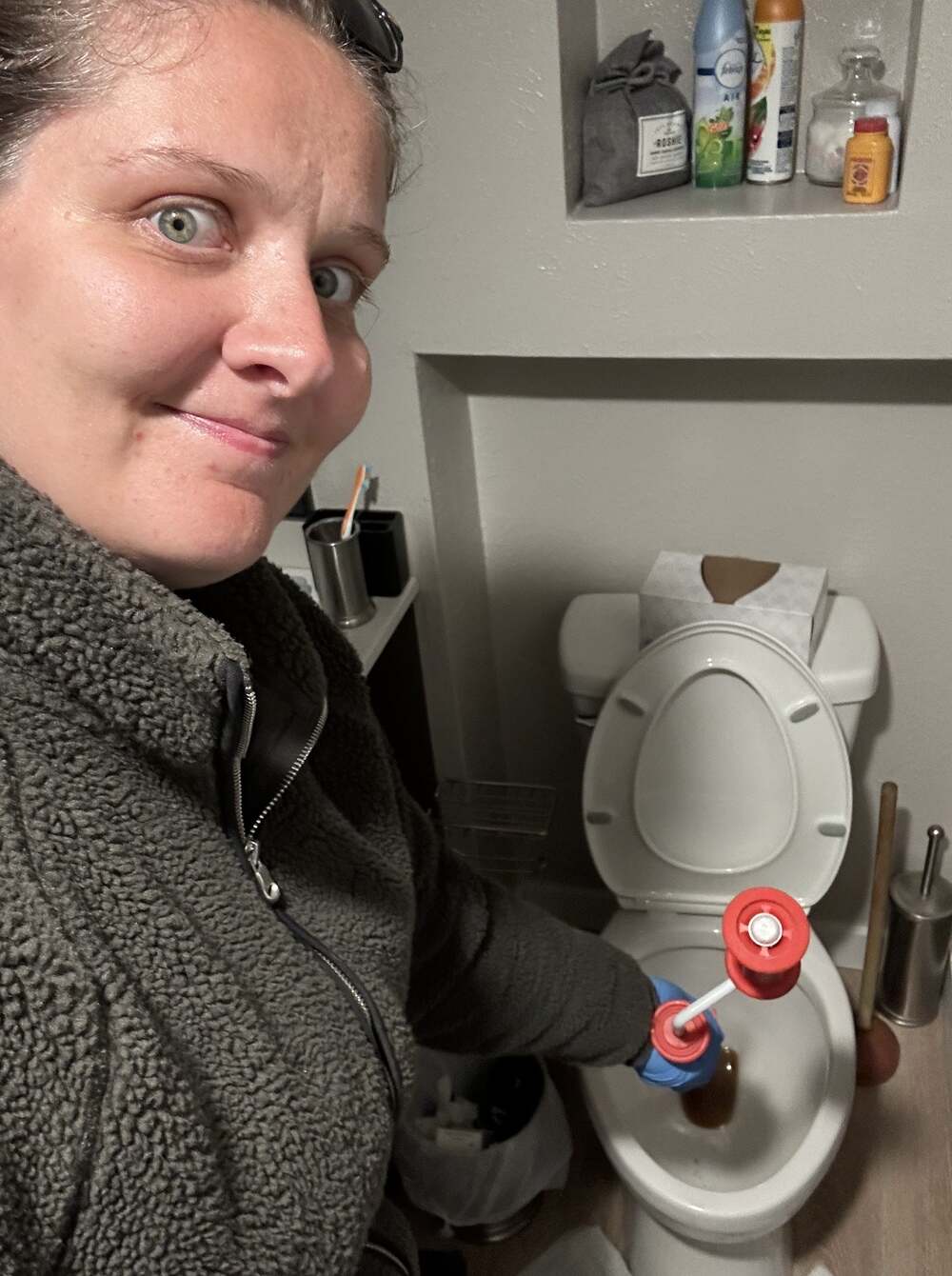
what do you do if the toilet plunger is not working and the toilet is still clogged?
A clogged toilet is an inconvenience that many homeowners face at some point. Plunging and auguring are common methods to tackle this issue. However, there are instances where these measures fall short. In this article, we’ll explore what to do if plunging and auguring haven’t worked. We’ll also provide insights into when it might be time to call in professional help.
Check the Length of Your Augur:
Before diving into more complex solutions, ensure that your augur is long enough for the job. Unlike plungers, which can potentially damage the wax seal, augurs offer a targeted approach. Available in 3-foot and 6-foot lengths, choosing the right size is crucial. A longer augur can reach deeper into the drain. This increases the chances of breaking through the clog.
Understanding the Limits of Auguring:
If a 6-foot augur fails to resolve the issue, it’s essential to consider other possibilities. There are two likely scenarios: the clog is further down the branch line, or it’s a Mainline stoppage.
Identifying Mainline Stoppages:
Mainline stoppages occur when the clog affects the main sewer line. This often results in multiple fixtures backing up. Signs include toilet water rising in the shower or bathtub. The toilet may also bubble when running water elsewhere. You might find sewage in the bathtub or shower. If these symptoms are present, it’s time to investigate further.
Locating Mainline Cleanouts:
Mainline cleanouts are access points to the main sewer line. They can be found in various locations throughout the house. Start by checking the front yard, where a double sweep cleanout might be present. This type allows snaking both into the house and toward the city sewer.
Assessing Mainline Cleanouts:
Carefully remove the caps from the cleanouts to inspect for standing water or sewage. If present, it indicates a Mainline stoppage. However, exercise caution, as removing the caps may release pressure, leading to spillage. Slowly unscrew them to avoid any mishaps.
When to Call a Professional:
Dealing with a Mainline stoppage is a challenging task. It requires specialized equipment and expertise. Attempting to snake the main sewer line without experience can lead to complications, injuries, and a messy cleanup. In such cases, it’s advisable to enlist the services of a professional plumber.
Sink Plunger Vs toilet plunger
When faced with a clogged sink or toilet, it’s natural to reach for the closest tool at hand. However, not all plumbing issues are created equal. Using the wrong tools can lead to more problems than solutions. In this article, we’ll discuss the common mistake of using a sink plunger on a toilet. We’ll also explain why it’s crucial to invest in the right equipment for the task at hand.
The Pitfalls of Using a Sink Plunger on a Toilet:
One of the first mistakes people make when dealing with a clogged toilet is trying to use a sink plunger. Unfortunately, this can have unintended consequences. The design and function of a sink plunger are not suitable for the complex plumbing of a toilet. Using a sink plunger on a toilet can blow out the seals on the P-trap and drains beneath the sink. This leads to more extensive and costly repairs.
The Ineffectiveness of Using a Kitchen Sink Snake:
Another common misstep is trying to snake a toilet with a kitchen sink snake. The hand-powered tool is designed for smaller drains. The snake’s size is inadequate for the larger diameter of a toilet drain, rendering it ineffective. It’s essential to use the right tool for the job. In this case, use a toilet auger snake designed specifically for toilets.
The Dangers of Powered Snakes:
It may be tempting to use a powered snake, such as a battery-powered or electric one, down a toilet. However, this can spell disaster for your plumbing. In previous content, we discussed how powered snakes can damage and even break the toilet. This can lead to costly repairs. Stick to manual tools like the recommended toilet auger to avoid unnecessary complications.
The Recommended Tool: Rigid Toilet Auger K6P:
For those unfamiliar with the right tool for toilet clogs, the Rigid Toilet Auger K6P is a reliable and effective choice. This toilet auger is designed specifically for toilets. It is available at Home Depot. It ensures a thorough and safe clearing of clogs without causing damage to your plumbing.


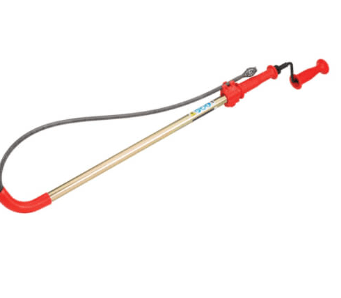
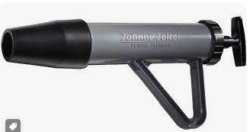
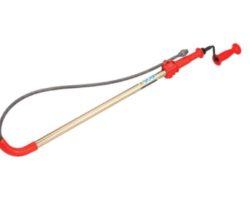
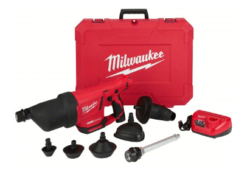
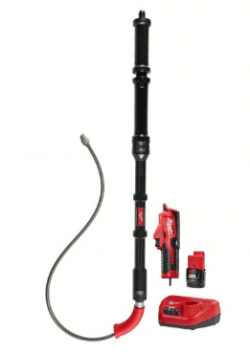
 SPECIALISTS
SPECIALISTS
